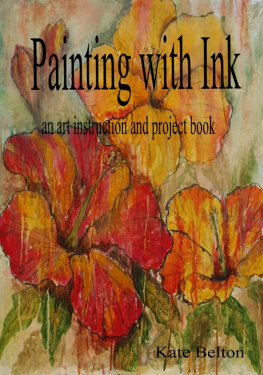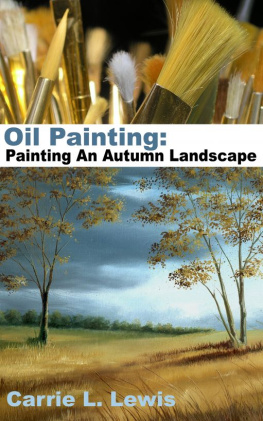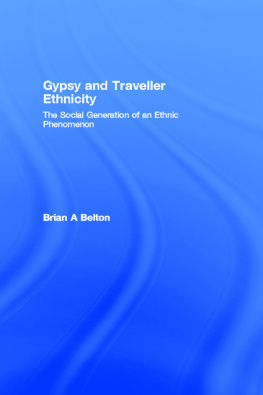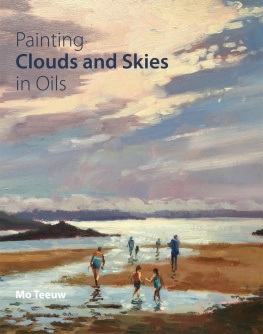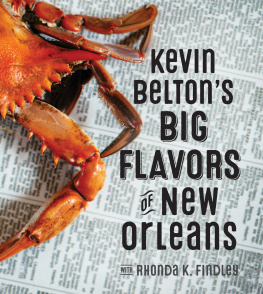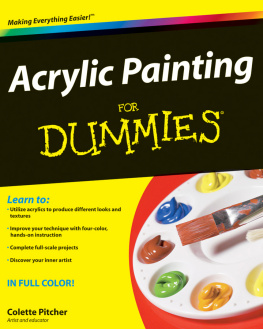Kate Belton - Painting with Ink: An Art Instruction Book
Here you can read online Kate Belton - Painting with Ink: An Art Instruction Book full text of the book (entire story) in english for free. Download pdf and epub, get meaning, cover and reviews about this ebook. year: 2012, publisher: BookBaby, genre: Home and family. Description of the work, (preface) as well as reviews are available. Best literature library LitArk.com created for fans of good reading and offers a wide selection of genres:
Romance novel
Science fiction
Adventure
Detective
Science
History
Home and family
Prose
Art
Politics
Computer
Non-fiction
Religion
Business
Children
Humor
Choose a favorite category and find really read worthwhile books. Enjoy immersion in the world of imagination, feel the emotions of the characters or learn something new for yourself, make an fascinating discovery.
- Book:Painting with Ink: An Art Instruction Book
- Author:
- Publisher:BookBaby
- Genre:
- Year:2012
- Rating:3 / 5
- Favourites:Add to favourites
- Your mark:
- 60
- 1
- 2
- 3
- 4
- 5
Painting with Ink: An Art Instruction Book: summary, description and annotation
We offer to read an annotation, description, summary or preface (depends on what the author of the book "Painting with Ink: An Art Instruction Book" wrote himself). If you haven't found the necessary information about the book — write in the comments, we will try to find it.
Painting with Ink: An Art Instruction Book — read online for free the complete book (whole text) full work
Below is the text of the book, divided by pages. System saving the place of the last page read, allows you to conveniently read the book "Painting with Ink: An Art Instruction Book" online for free, without having to search again every time where you left off. Put a bookmark, and you can go to the page where you finished reading at any time.
Font size:
Interval:
Bookmark:
Copyright 2012, Tinkat Alley Art Studio. The patterns in this book are for the use of artists. You may paint these designs for personal use or for pin money, with the understanding that the original artist, Kate Belton, will be acknowledged. Teachers may use these patterns for teaching purposes in their personal studios and may photocopy one pattern per student. Teachers must acknowledge the original artist, Kate Belton. Instructions and colour photographs may not be copied or reproduced in any way without the written consent of Tinkat Alley Art Studio.
All rights reserved. No part of this publication may be reproduced, stored in a retrieval system, or transmitted in any form or by any means without the prior permission of Tinkat Alley Art Studio.
I have written this book in the hope that I can pass on to you my love and enthusiasm for painting with acrylic ink and that you will be able to pick up the skills and techniques that I have used in these projects to apply to your own work. I have included many step by step projects for the student to copy in order to help develop the necessary skills. I hope that this will provide the confidence for you to create your own art works.
The inspiration for many of the paintings in this book came from photographs I have taken in the garden and from around where I live in Newcastle and Lake Macquarie, New South Wales. The possum and her baby painting was created from photographs of some possums that live in my shed and keep me company whist I am making picture frames. The Scott Street painting is of some terrace houses on Scott Street, a beautiful street up at the top of town in Newcastle. Streetscape is of the main shopping street, Hunter Street in Newcastle. Other paintings in the book are simply created from seeing something come out of a background that I created using dripping and running ink. The Gum Leaves and the Hibiscus where created with this technique.
I have written this book in two parts. The beginning of the book covers materials and the basic techniques that I have used in creating the projects. The second part of the book contains the instructions for painting the projects. I have repeated some of the information from the first part of the book in the step by step instructions. However, I suggest that you read through the first sections to familiarize yourself with the basic materials and techniques that you will need. Each painting in the book has instructions, a colour photograph and a line drawing.
You will need plenty of space to work on these projects as the ink and the techniques used can be quite messy. Set up a big table with plenty of old painting cloths or towels and an easel. For some of the work you will need to work on a flat surface and for some of the work you will need to be able to put your work on an easel or prop it up on box or something similar to allow the ink to run. You will also need an area with plenty of light.
A hair dryer is very useful for drying the ink between the different stages of the painting. It is also nice to have a sunny spot to put your painting to dry. It is often better to just let the painting dry than to use the hair dryer which tends to push the ink around. I often work on a few paintings at a time so that I can leave work to dry and dont have to wait around, I can simply work on another piece while the first one is drying.
The ink line work on the paintings is created using a dip pen with a fine nib. The lines are drawn on with the pen dipped in the ink and then the ink line is lightly sprayed with a fine mist of water to soften the lines and create interest.
A spray bottle of water is used to lightly mist the paintings to help move the ink to create interesting patterns.
You will need plenty of soft rags and paper towels to wipe off and soften the drips of ink on the paintings if they drip in areas where you do not want them.
A selection of different sized palette knives is useful for applying the texture paste to the background of the canvas or board and to apply gesso to the painting.
Combs and wood graining tools and other implements to create interest in the texture paste backgrounds.
Gauze bandage is applied to some of the paintings to create further level of texture and interest on the backgrounds of some of the paintings.
A stick of charcoal or soft pencil is needed to draw the design on to the canvas or board. Alternatively, grey graphite paper can be used to transfer the design on using a stylus

Brushes and equipment from the left: large and small palette knives, wood graining tool, two inch flat bristle brush, one inch flat Taklon brush, half inch dagger brush, number one mini liner, charcoal and a dip pen with a fine nib.
This brush is used for applying a base colour of acrylic paint over the texture paste. This is a lovely brush to work with and applies the paint smoothly. The brush also holds plenty of water and is good for applying large areas of colour washes.
This brush is used to apply the gesso and can also be used to apply paint in a rougher manner than the Taklon brush. This is useful if you want to add more texture to your work or scrub some colour in.
This brush is used to apply the washes of ink to the painting. This is a great brush for the ink techniques as it holds plenty of water and can manipulate the flow of the inks.
Font size:
Interval:
Bookmark:
Similar books «Painting with Ink: An Art Instruction Book»
Look at similar books to Painting with Ink: An Art Instruction Book. We have selected literature similar in name and meaning in the hope of providing readers with more options to find new, interesting, not yet read works.
Discussion, reviews of the book Painting with Ink: An Art Instruction Book and just readers' own opinions. Leave your comments, write what you think about the work, its meaning or the main characters. Specify what exactly you liked and what you didn't like, and why you think so.

